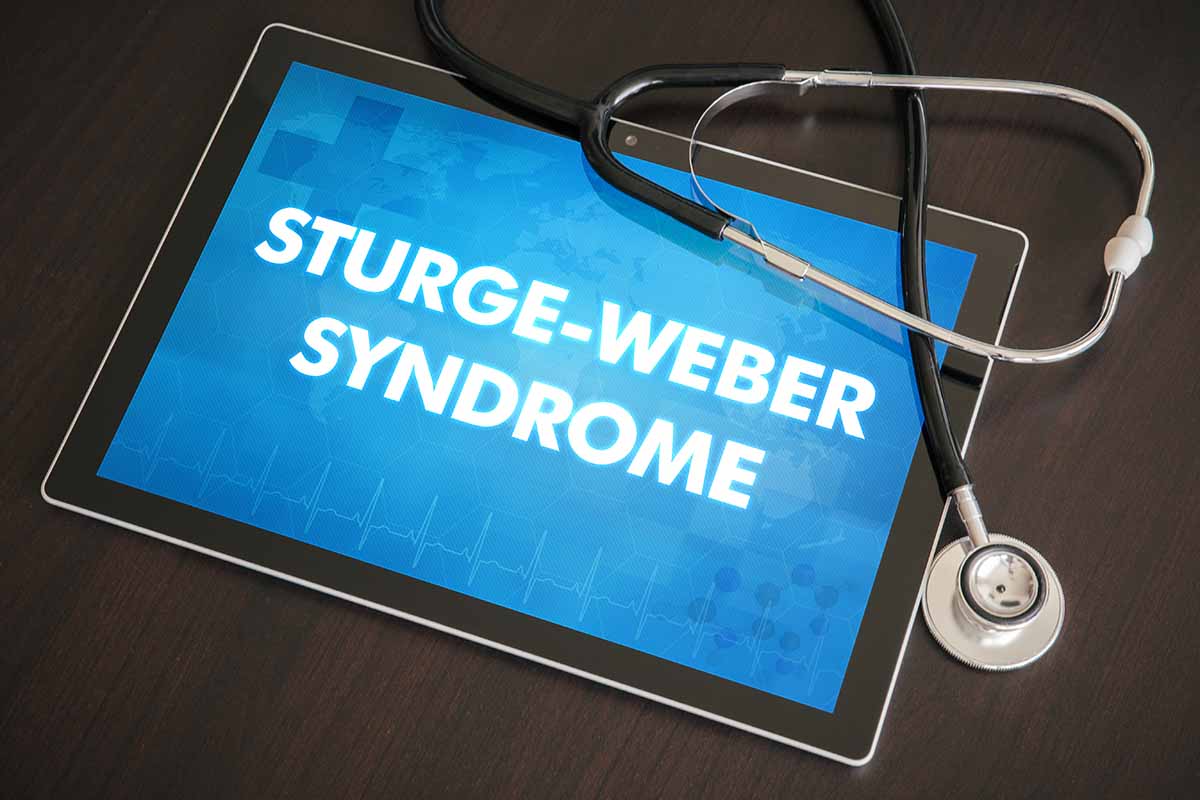
Visual Hallucinations After Treatment With Thiocolchicoside
Thiocolchicoside is a semisynthetic derivative of naturally occurring colchicoside, which is used clinically for its muscle relaxant, analgesic, and anti-inflammatory properties.1 However, the main adverse effects of thiocolchicoside are nausea, somnolence, asthenia, allergy, and vasovagal reactions.2 Also, its antagonism of γ-aminobutyric acid (GABA) type A receptor function might produce convulsant activity in humans, which has been noted in several reports.1-3 Here, we report a case in which a visually impaired patient describes the development of visual hallucinations after 2 oral administrations of thiocolchicoside.
Case Report
Mr A is a 75-year-old man who voluntarily entered the emergency department (ED) because he had been seeing unusual images in his left visual field for 3 days. He told the attending physician that 3 days ago he was watching a hockey game on television when he began to see one of the players outside the TV frame in a colored, detailed fashion. Although he thought the experience was odd, he reported no fear and remained calm as the experience unfolded. However, he did tell his wife, who became alarmed. He decided to wait until the next day to see if the visions recurred, which they did. He described an infant girl in a red skirt who was playing with her smartphone, the blue light of which he could clearly distinguish. Another visual experience consisted of seeing a green lawn with number 3s on it, as well as a long-lost friend in a striped shirt. He described the images with a fair amount of detail and said they were in color. There were no experiences in other sensory modalities. The patient believed the images to be part of some pathological process, and he did not associate them with any cultural or delusional belief system. Mr A had no other complaints. He denied confusion, headache, cough, or fever. There was no hyperthermia or lowering of consciousness. His bloodwork showed no anomalies, and the computed tomography scan exhibited moderate cortico-subcortical atrophy but no acute changes. Mr A reported no similar previous episodes. There was no suggestion of recent functional decline.
According to Mr A’s medical history, he had type 2 diabetes, diagnosed for 30 years, and was already presenting with diabetic retinopathy. He had diminished visual acuity, as he sees 0.1 in the right eye and 0.2 in the left eye. The ophthalmology department examined Mr A and concluded that there was nothing to suggest retinopathy deterioration.
Mr A was next observed by a psychiatrist, who found no psychopathology such as hallucinations in any other sensory modality or delusional ideas. A brief cognitive evaluation was performed with the Addenbrooke Cognitive Assessment,4 and Mr A scored 84 points, which is a normal result for his age and education.
Recent medical history revealed that Mr A had complained to his family doctor about neck pain, and a combination of acetaminophen 500 mg and thiocolchicoside 2 mg was prescribed 3 times daily. The patient had started experiencing hallucinations the first night after completing 2 administrations of the medication regimen.
Since there were no alarm signs and the cause for the episode was attributed to thiocolchicoside, we recommended suspension of the analgesics and scheduled an appointment for reassessment. We also scheduled an electroencephalogram (EEG) for a later date, since it was not readily available at the ED.
However, because the hallucinations did not stop 4 days after the suspension of thiocolchicoside, Mr A visited a private psychiatrist who prescribed oxazepam 15 mg 3 times daily and melperone 12.5 mg at bedtime until further reevaluation. Due to excessive sedation after the first 2 administrations of oxazepam, Mr A decided not to proceed with the treatment plan. He noted, however, that the hallucinations had stopped.
At his next psychiatry appointment a month after the ED discharge, Mr A reported no further episodes of hallucinations. The EEG showed no epileptogenic activity, although it demonstrated slower basal rhythm due to an intermittent and diffuse slow activity in both temporal lobes.
Discussion
Visual hallucinations are a psychopathologic phenomenon that may occur within several medical instances, such as delirium tremens, seizures, Lewy body dementia, or Charles Bonnet syndrome.5 They may also arise as a result of a drug insult.5 Numerous drugs of different classes have been implicated in the emergence of visual hallucinations, such as levodopa,6 tramadol,7 linezolid,8 moxifloxacin,9 gabapentin,10 duloxetine,11 and naltrexone.12 Despite the accounts of thiocolchicoside-induced seizures,1,2 we found no reports in the literature of thiocolchicoside-induced visual hallucinations. Moreover, visual hallucinations seem to be a common phenomenon among the visually impaired, particularly in the elderly.13 The prevalence of complex visual hallucinations in the visually impaired has been estimated to vary between 11% and 15%.13
It is hypothesized that individuals with visual impairment due to the deterioration of the visual pathway may develop a state of cortical hyperexcitability, particularly in the visual cortex.14 This state is thought to cause the disinhibition and firing of visual regions, resulting in the appearance of hallucinations.
Given that GABA is the main inhibitory neurotransmitter in the brain, we suggest that in our visually impaired patient, the administration of thiocolchicoside, given its GABA antagonistic properties, might have acted as a trigger to the development of visual hallucinations in an already hyperexcitable cortex. Furthermore, the positive impact of benzodiazepines in resolving the hallucinations adds to this hypothesis. Finally, we should address the patient’s treatment with a combination of thiocolchicoside and acetaminophen. One could speculate whether acetaminophen played any part in the clinical picture; however, this does not seem likely. We found no reports associating acetaminophen alone with visual hallucinations,15 and the potential pathophysiologic explanation lends more plausibility to the hypothesis of thiocolchicoside as the causative agent.
Regardless of the pathogenesis, this case report highlights the need for caution with the utilization of thiocolchicoside in visually impaired individuals. Although it is likely that patients who develop hallucinations in this context will have insight for the phenomenon, it might still be a distressful experience that physicians should be aware of when prescribing analgesics in this population.
Published online: October 1, 2020.
Potential conflicts of interest: None.
Funding/support: None.
Patient consent: Consent was obtained from the patient to publish this case report, and the personal information has been de-identified to protect anonymity.
REFERENCES
1.De Riu PL, Rosati G, Sotgiu S, et al. Epileptic seizures after treatment with thiocolchicoside. 2001;42(8):1084-1086.
2.Giavina-Bianchi P, Giavina-Bianchi M, Tanno LK, et al. Epileptic seizure after treatment with thiocolchicoside. Ther Clin Risk Manag. 2009;5(3):635-637. PubMed CrossRef
3.Carta M, Murru L, Botta P, et al. The muscle relaxant thiocolchicoside is an antagonist of GABAA receptor function in the central nervous system. Neuropharmacology. 2006;51(4):805-815. PubMed CrossRef
4.Machado A, Baeta É, Pimentel P, et al. Psychometric and normative indicators of the Portuguese version of the Addenbrooke’s cognitive examination-III. Preliminary study on a sample of healthy subjects. Acta Neuropsychol. 2015;13:127-136.
5.Teeple RC, Caplan JP, Stern TA. Visual hallucinations: differential diagnosis and treatment. Prim Care Companion J Clin Psychiatry. 2009;11(1):26-32. PubMed CrossRef
6.Beaulieu-Boire I, Lang AE. Behavioral effects of levodopa. Mov Disord. 2015;30(1):90-102. PubMed CrossRef
7.Mascaro J, Formiga F, Pujol R. Charles-Bonnet syndrome exacerbated by tramadol. Aging Clin Exp Res. 2003;15(6):518-519. PubMed CrossRef
8.Palaniappan P, Rajaraman V. Visual hallucinations: a treatment-emergent adverse effect of linezolid. J Neuropsychiatry Clin Neurosci. 2015;27(1):e65. PubMed CrossRef
9.Higdon E, Twilla JD, Sands C. Moxifloxacin-induced visual hallucinations: a case report and review of the literature. J Pharm Pract. 2017;30(3):375-377. PubMed CrossRef
10.Parsons KA, Derkits ME. Visual hallucinations associated with gabapentin use. Am J Health Syst Pharm. 2016;73(10):631-634. PubMed CrossRef
11.Yazici KU, Percinel Yazici I. Visual hallucination induced by duloxetine use: a male case diagnosed with generalized anxiety disorder. Psychiatry Clin Psychopharmacol. 2018;28(3):346-348. CrossRef
12.Lee DB, Woo YS, Bahk WM. Naltrexone-associated visual hallucinations: a case report. Clin Psychopharmacol Neurosci. 2019;17(2):329-331. PubMed CrossRef
13.Menon GJ, Rahman I, Menon SJ, et al. Complex visual hallucinations in the visually impaired: the Charles Bonnet Syndrome. Surv Ophthalmol. 2003;48(1):58-72. PubMed CrossRef
14.Painter DR, Dwyer MF, Kamke MR, et al. Stimulus-driven cortical hyperexcitability in individuals with Charles Bonnet hallucinations. Curr Biol. 2018;28(21):3475-3480.e3. PubMed CrossRef
15.Herg×¼ner S, ×–zayhan HY. Visual hallucinations with methylphenidate and acetaminophen in combination. J Child Adolesc Psychopharmacol. 2015;25(7):598-599. PubMed CrossRef
aPsychiatry and Mental Health Department, Leiria Hospital Centre, Leiria, Portugal
bOphthalmology Department, Leiria Hospital Centre, Leiria, Portugal
*Corresponding author: Sérgio M. Martinho, MD, Serviço de Psiquiatria e Saúde Mental, Centro Hospitalar de Leiria, Rua das Olhalvas, 2410-196, Leiria ([email protected]).
Prim Care Companion CNS Disord 2020;22(5):19l02557
To cite: Martinho SM, Martins JT, Poças AL, et al. Visual hallucinations after treatment with thiocolchicoside. Prim Care Companion CNS Disord. 2020;22(5):19l02557.
To share: https://doi.org/10.4088/PCC.19l02557
© Copyright 2020 Physicians Postgraduate Press, Inc.
Please sign in or purchase this PDF for $40.00.





